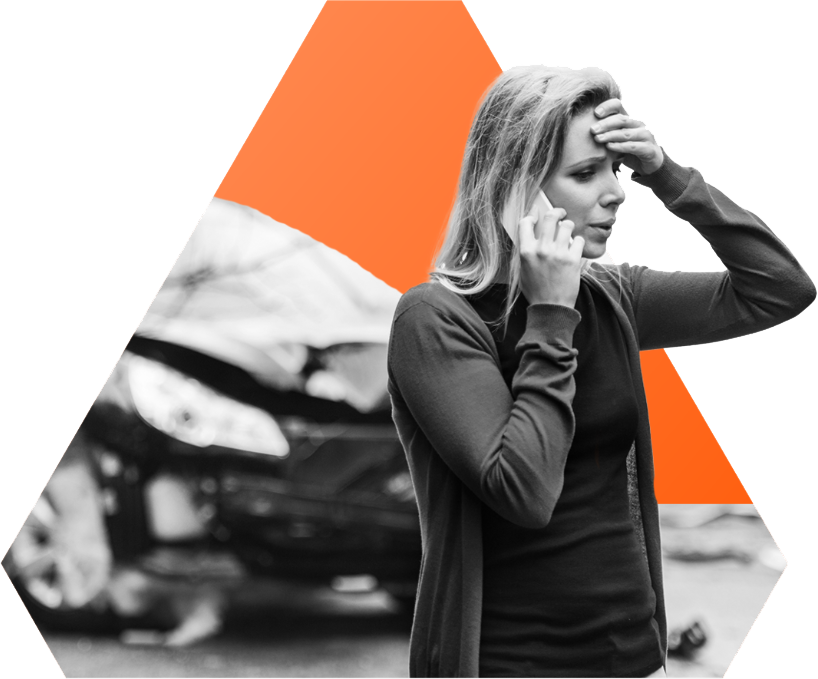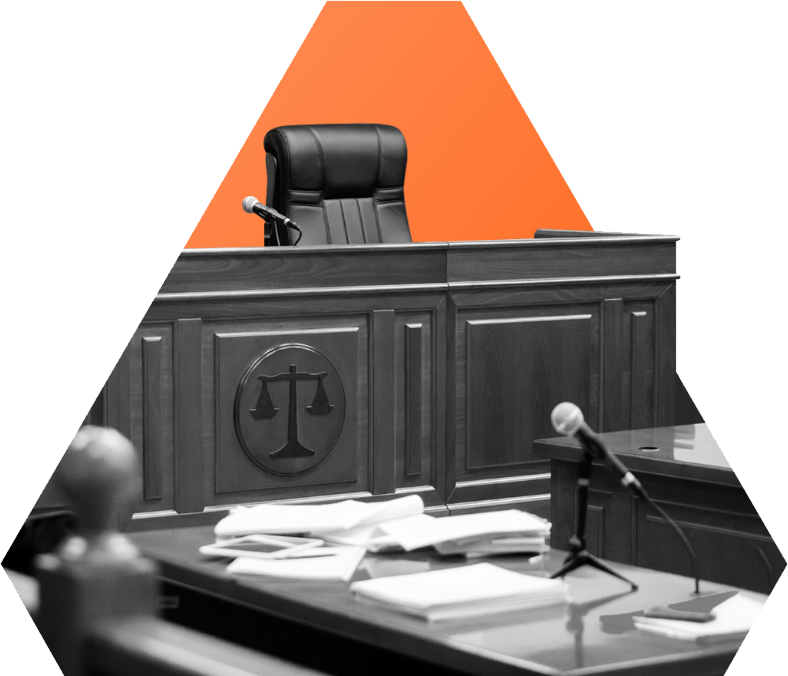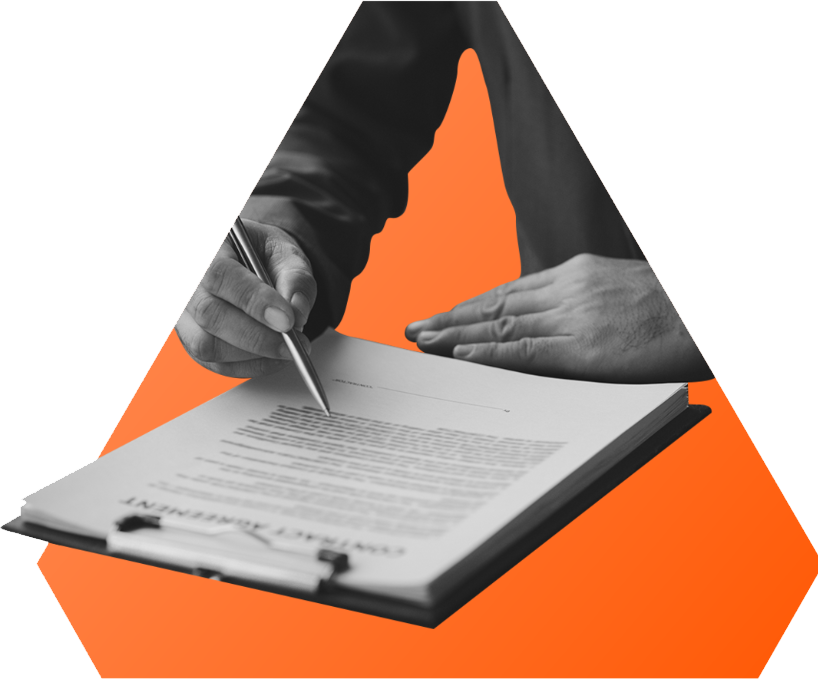Car crashes are unexpected and jarring. You might feel disoriented or dazed, not to mention hurt. Even if it was a minor crash and it seems like any damage is limited to your car, there are ways to protect yourself and your recovery. Take these steps to secure your financial future and your health.

Your health comes first—and timely treatment also protects your claim. Getting evaluated right away (ER, urgent care, or your primary physician) creates a medical record that links the crash to your injuries. Insurers scrutinize “gaps in treatment,” so follow your doctor’s plan and attend all referrals (orthopedics, PT, pain management, neurology, imaging). Consistent care shows you’re doing your part to recover and prevents the insurer from arguing you made things worse by not following orders.
Bottom line: Prompt, consistent care helps you heal and creates the evidence we need to prove injury, causation, and damages.
Notify your insurer (and, if applicable, the at-fault driver’s carrier) as soon as possible. You can report basic facts without giving a recorded statement or detailed interview. Early notice preserves coverage; premature statements can be used against you.
Pro tip: Call us before returning adjuster calls. We’ll guide what to say (and what not to) so you don’t unintentionally undercut your case.
Chicago Auto Insurance Claims Do’s and Don’ts
Serious injuries, disputed fault, or multiple insurers are signals to bring in counsel early. The insurer’s goal is to pay as little as possible under the policy. Our goal is full, fair compensation based on the evidence and Illinois law. Retaining one of our top-rated Chicago car accident lawyers levels the playing field and often improves the value of your claim.
Next step: Focus on your recovery. We’ll handle insurers, deadlines, and evidence while you heal.
While you're working on your physical recovery, our team will be working on securing justice and compensation. We know how traumatic a car crash is, and in our experience, our clients want relief quickly. But it's critical to build a case that's solid. We'll communicate with you every step of the way, and make sure you know your options before we make any decisions. We're here to uplift you through your hardships.

A strong case begins with a thorough, independent investigation. Insurance companies will conduct their own inquiries—but their goal is to minimize payouts, not uncover the full truth. Your attorney’s investigation ensures that no piece of critical evidence is overlooked or misinterpreted. At Staver Accident Injury Lawyers, P.C., we don’t simply review the insurer’s findings—we build our own case from the ground up using professional experience, forensic insight, and expert resources.
In short: Your lawyer’s investigation ensures the evidence tells the full story—not just the version the insurer wants you to believe.
Liability in a personal injury case is rarely one-dimensional. More than one person, business, or organization can share fault for your injuries. Your attorney’s job is to find every responsible party—because each may bring its own insurance coverage and legal obligation to pay.
We carefully trace the chain of events to see where negligence began, who enabled it, and how each party’s role intersects. This comprehensive approach maximizes available recovery sources and protects you from partial compensation.
Once liability is established, the next step is to determine how much your case is worth. A personal injury claim includes both economic and non-economic losses—tangible financial costs and the human toll of pain, disruption, and loss of normal life. Your attorney compiles evidence to ensure every category of damages is proven and valued accurately.
Our goal: a comprehensive valuation that accounts for every hardship—financial, physical, and emotional—caused by the accident.
Once the investigation and damages analysis are complete, your claim formally begins with a demand letter. This carefully written communication outlines the facts, evidence of liability, and total compensation sought. It signals to the insurance company that your case is fully prepared and supported by evidence—and that you’re ready to take legal action if they refuse to be fair.
Think of the demand letter as your claim’s opening argument: a clear, evidence-backed statement that you are serious about securing full and fair compensation under Illinois law.
5 Ways to Get Max Value From a Car Accident Claim in Illinois
Working towards a settlement can be a lengthy process. It's not uncommon for relief to take several months, even years, to arrive after a crash. We'll stand with you as we work towards a settlement, but if the insurance company isn't cooperating, we may need to consider a lawsuit. These are usually a last resort, but they're effective at holding the at-fault party responsible for your damages. We are prepared to fight for you in the courtroom, and fight for your full compensation.

If the insurance company refuses to make a fair settlement after receiving your demand letter, the next step is to file a personal injury lawsuit. Filing suit does not automatically mean your case will go to trial—in fact, most personal injury cases in Illinois are resolved through settlement before trial—but it sends a strong message that you are serious about protecting your rights and holding the negligent party accountable.
In short: Filing suit isn’t a last resort—it’s a powerful tool to move your claim forward and demonstrate your commitment to justice and full compensation.
Discovery is the most comprehensive and time-consuming part of litigation. It’s how each side exchanges information and evidence to build or defend a case. The discovery phase turns suspicions into proof and exposes weaknesses in the defense’s position. This process often leads to settlements once the truth comes to light.
Why it matters: Discovery allows your Staver lawyer to uncover hidden details, test the defense’s story, and build a compelling, evidence-based narrative that supports your claim.
After discovery, both sides usually have enough information to evaluate the strengths and weaknesses of their positions. At this point, your case may proceed to settlement negotiations, often through mediation—a structured, confidential discussion overseen by a neutral third party. Many of our clients achieve successful settlements during this stage because insurers realize the risk and expense of trial outweighs the cost of resolving the case fairly.
Whether through settlement or verdict, our mission remains the same: to secure the maximum recovery you’re entitled to under Illinois law and ensure those responsible are held accountable.
If the jury rules in favor of the defendant, that’s not always the end of the story. Illinois law allows appeals when legal or procedural errors may have affected the verdict. Your Staver attorney will meticulously review the trial record to determine whether an appeal is justified and identify any grounds for reversal or retrial.
The personal injury claims process is complicated, so it's understandable if you still have questions about your case. You might wonder where the lawsuit will need to be filed, if an attorney is really necessary, or what might delay the process. We can give you some answers here, but one of our Chicago car accident lawyers can go over your concerns directly.

When a lawsuit becomes necessary to settle your personal injury claim, your attorney can help you understand everything you need to know about the filing process. Knowing where to file your lawsuit is critical. The Illinois Rules of Civil Procedure dictate the jurisdiction of civil claims, and the Staver team will look at every possible venue to ensure your lawsuit is filed correctly. If you were hit by another Chicago resident, your lawsuit should be filed in a Cook County court. But there’s a chance you could have a federal case. We’ll be able to review your case and ensure an accurate filing.
Your settlement is generally not taxable in Illinois at either a state or federal level. Your Staver lawyer will be able to explain if your payout is taxable, but compensation for physical injuries is not usually taxable. Each case is unique, so it’s critical to review these questions with your lawyer.
Your evidence will vary based on the circumstances of your claim. Your Staver attorney can explain what makes the most impact for your settlement. You’ll need to consider anything that can prove the other driver caused your damages and the extent of those damages as evidence. That means your medical bills, prescriptions, photos of the crash, videos, or eyewitness statements could be crucial to showing what you lost because of the crash. Your lawyer can craft the case around what evidence is available.
There are a few things that could lower your settlement amount. Illinois has a comparative negligence statute: your settlement will be lowered by the same amount you share responsibility for your losses. Any liability, up to 50%, can reduce your settlement amount. So if you’re 20% responsible for your crash, any settlement be reduced by 20%. If you’re more than 50% liable, you cannot pursue compensation from the other driver involved.
You might feel you can pursue a personal injury claim alone. Even with the most clear-cut evidence showing you deserve complete compensation, the insurance company will resist paying you for your losses. By trusting the Staver team, we can help you secure your compensation. Insurance companies will look for any out they can to keep from paying you. We’ll be able to fight them to ensure you get the money you need to recover after your traumatic experience.
In most Illinois personal injury cases, you have two years from the date of injury to file a lawsuit under 735 ILCS 5/13-202. Exceptions apply for minors, discovery-rule cases (where the injury wasn’t immediately apparent), and claims against government entities—which may require notice within one year. Missing these deadlines can permanently bar your claim, so contact an attorney immediately after an accident.
The timeline varies depending on complexity, injury severity, and court schedules. Simple cases may settle within a few months after medical treatment concludes, while litigated cases—especially those requiring expert testimony or multiple defendants—can take 12 to 24 months. The Staver team works to resolve your case efficiently without compromising your total compensation.
After your complaint is filed and served, the defendant must answer—usually within 30 days. From there, both sides enter discovery, exchanging documents and taking depositions. Settlement discussions often continue alongside these steps. If no fair agreement is reached, your attorney will prepare for trial while keeping you informed at every stage.
Mediation is a voluntary, confidential process where a neutral mediator helps both sides reach a fair resolution without going to trial. It’s common after discovery concludes. Many of our clients successfully settle through mediation because it avoids lengthy court proceedings while achieving favorable compensation.
Yes. Filing a lawsuit does not prevent settlement—in fact, most cases resolve during litigation before reaching trial. Settlement can occur at any point before the judge or jury delivers a verdict. Negotiating after suit is filed often results in higher offers because the defendant understands you’re serious about pursuing justice.
If the at-fault driver lacks sufficient coverage, your uninsured/underinsured motorist (UM/UIM) policy can step in. Illinois law requires insurers to offer these protections. Your Staver attorney can handle your UM/UIM claim directly with your insurer to ensure full payment under your policy.
Yes, as long as you were less than 50% responsible under Illinois’ modified comparative negligence rule. Your compensation will be reduced by your percentage of fault—for example, if you were 20% liable and awarded $100,000, your net recovery would be $80,000.
Not necessarily. Most personal injury cases are resolved through settlement negotiations or mediation, meaning you’ll never have to appear in court. However, if the insurance company refuses to make a fair offer, your attorney will file suit and handle all court appearances on your behalf, keeping you updated throughout the process.
Yes. Illinois allows recovery for emotional distress when it results from a physical injury or extreme negligence. This includes anxiety, PTSD, or loss of normal life caused by the accident. Documentation from mental health professionals and testimony about life changes can help prove these damages.
Personal injury firms like Staver Accident Injury Lawyers, P.C., work on a contingency fee basis—meaning you pay nothing upfront. At the conclusion of your case, attorney fees (a set percentage of your recovery) and case expenses such as filing fees, expert witnesses, and record requests are deducted. All deductions are clearly outlined in advance for full transparency.
Bring all accident-related documentation, including the police report, photos, insurance information, medical bills, correspondence with insurers, and any witness details. Even partial or incomplete documents help your lawyer evaluate your case more accurately. Initial consultations are free, confidential, and focused on outlining your options.
If we don’t recover compensation, you owe nothing. That’s the promise of our contingency fee agreement—no upfront costs, no hourly rates, and no fees unless we win. Even in complex or hard-fought cases, your Staver attorney bears the financial risk so you can focus entirely on recovery.